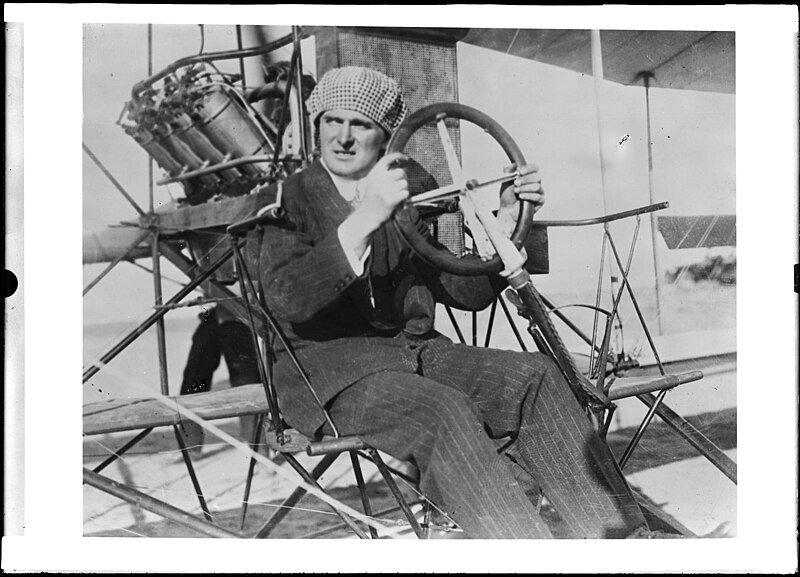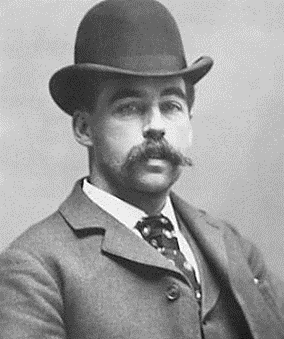Scatter-brained, simple, and manic-depressive. They just don't make business magnates like Sam Hill anymore.
Sam was born to a Quaker family which moved to Minnesota to avoid the Civil War. After attending Harvard University, Sam set himself up at a law practice and made a name for himself by suing railroads. One railroad owner, James Hill (unrelated) rather tired of Sam's antics, solved the issue by hiring Sam and making him an executive. Sam thanked his benefactor by marrying the man's daughter Mary, who was thereafter known as Mary Hill Hill. Thanks to his fat railroad paycheck, and a generous wedding gift from his father-in-law, Sam was thrust into the highfalutin world of the American gilded age, rubbing shoulders with millionaires, taking vacations to Europe, and becoming quite the man about town in Minneapolis.
As the start of the 20th century rolled around Sam got rather tired of railroads and his interests switched to electric companies. He moved to Seattle and purchased the local light and gas company. His wife and two children followed, but after six months they moved back to Minneapolis. Sam didn't mind a bit. His wife was becoming an invalid, his daughter was nutty enough to get locked in a mental institution, and his son was the worst kind of rich kid lay about. Sam built himself a mansion in Seattle, which he paid for by doubling gas rates, and soon after sold his electric company and successfully invested in the stock market, netting him enough money to try whatever batshit crazy idea entered his head. It was at this time that Sam became obsessed with roads, traveling the world to study them, and pushing Oregon and Washington to build a highway up the Columbia River Gorge. This probably had nothing to do with the fact that he had purchased a large tract of land in Eastern Washington along the Columbia River that was pretty much nothing but rock and steep hillside. Oregon in the end gave in, building a highway with more aesthetic than practical value.
Though he was estranged from his wife, Sam was never lonely thanks to an army of mistresses. Three of these women became pregnant, an issue Sam solved by marrying them off to random acquaintances so his offspring wouldn't be considered bastards. When his favorite mistress became pregnant, Sam built her a mansion and married her off to his cousin, but of course kept sleeping with her. Sam, growing tired of roads, moved on to telephones, starting an unsuccessful telephone company in Portland. He then spent World War I riding a train through Europe and Russia. Sam claimed he was spying for the U.S. government, but actually he was just being a crazy rich guy. Following the war, Sam decided to build a bunch of monuments just because he could. The first was a concrete version of Stonehenge built on his butt fuck nowhere property in Eastern Washington to commemorate three local men who had died in World War I. The second was a massive arch, called the Peace Arch, on the U.S.-Canadian border north of Seattle. This monument was a little more clever given that next to it, on the Canadian side, Sam built a large resort full of liquor for Americans looking to take a vacation from Prohibition.
As Sam got older, he found himself becoming more sentimental for his estranged wife and family. To try and attract them west, he built for them a massive concrete mansion, which he named Maryhill in honor of his wife and daughter. Unfortunately, this mansion was built on his god forsaken property in Eastern Washington. With his family refusing to come west, Sam was left with a bit of a problem, namely what to do with the concrete edifice hulking over the Columbia River. In the end, on the suggestion of one of his mistresses, Sam turned his house in the middle of nowhere into an art museum in the middle of nowhere, somehow getting Queen Marie of Romania to come out and do the dedication. The rest of Sam's life was mostly schemes involving motion pictures and underwater mining, and having elaborate globes made to give away as presents. When he finally died he had himself interred in a monument of his own design near his Stonehenge. A few years after his death the monument crumbled and fell into the Columbia River.
Image: https://en.wikipedia.org/wiki/Samuel_Hill#/media/File:Samuel_Hill,_road_builder.png



